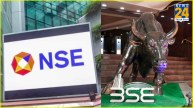At a time when the government claims India to be the world’s fastest-growing economy, a report has claimed that 90% of the citizens don’t have discretionary purchasing power.
The vast majority of the Indian population somehow manages to live in poverty and the consumption is limited to only 10% of the masses.
Indus Valley Annual Report 2025
According to the Indus Valley Annual Report 2025, the top 10 percent of Indians drive economic growth and consumption.
It means only 14 crore Indians have the money to spend on non-essential items.
In other words, 90% of the people have no money to spend the way they wish or the non-essential expenditures.
A small group of people is also emerging who use online options of payments like the UPI for spending on their discretionary.
Poor-Rich Divide Gets Wider
The poor-rich divide and concentration of wealth in a small group of people are also shaping the Indian economy in another way by influencing the major firms to focus on premium products rather than products of mass consumption.
These companies try to satisfy the consumers with deeper pockets.
The firms also focus on driving growth by paying more attention to expensive, upgraded products catering to the wealthy, rather than focusing on mass-market products.
Booming ‘Experience Economy’
On the other hand, another sector called “experience economy” is booming in the country.
This sector can be identified in those consumers who allegedly spent lakhs of rupees on concerts of Coldplay, Ed Sheeran or Diljeet Dosanjh.
About 300 million people consist of this class of people in India.
With the booming “experienc economy”, branded goods are capturing a bigger share of the market.
Consuming Class Deepening, Not Widening
According to the report prepared by venture capital fund Blume Ventures, the consuming class in India is not “wideninng”, it is “deepening” instead.
It means, the number of wealthy people in Asia’ third-largest economy is not increasing, rich people are getting richer.
The report also confirms the long-held assumption that the post-pandemic recovery in India has been K-shaped, meaning, the rich have got richer, while the poor have become poorer, losing much of their purchasing power.
The rich-poor divide has become deeper with the top 10% of Indians holding 57.7% of national income, while this number was 34% in 1990.
On the other hand, the share of the lower half of the population in national income has come down from 22.2% to 15%.
Decreasing Purchasing Power Of Masses
The decreasing purchasing power of the masses is evident by the fact that the affordable housing constitutes just 18% of India’s overall market compared with 40% five years ago.
The Indus Valley Annual Report 2025 also reveals that the latest consumption slump has deepened in such a way that it has not only destroyed the purchasing power of the masses, but financial savings have dropped and indebtedness among the masses has surged.
Expressing concerns over the development, the Reserve Bank of India slammed commercial banks for giving easy unsecured lending that propped up demand after the Covid pandemic.
According to the data compiled by Marcellus Investment Managers, “the middle 50% of India’s tax-paying population has seen its income stagnate in absolute terms over the past decade. This implies a halving of income in real terms adjusted for inflation.”











